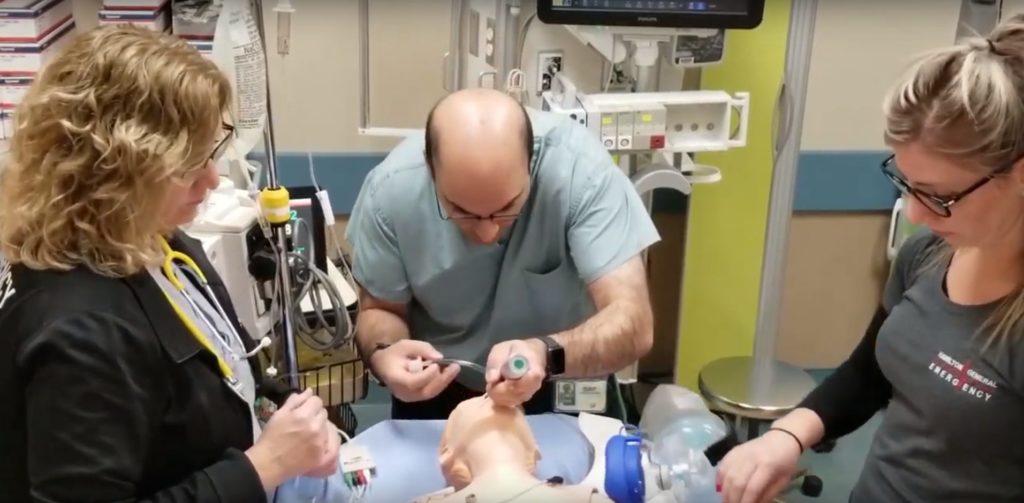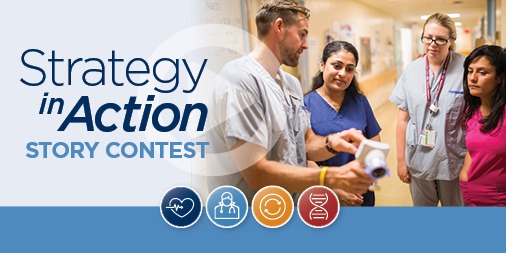
Pediatric simulation prepares staff for pint-sized patients
The emergency department at Hamilton General Hospital (HGH) doesn’t often see very sick pediatric patients. Generally, children are brought to McMaster Children’s Hospital (MCH), which is specifically designed as a Children’s only emergency department. Sometimes, very sick or badly injured children are brought to HGH because they need immediate help, and MCH is too far to go.
“Sick pediatric patients aren’t common here,” says Dr. Kyla Caners, an emergency doctor at Hamilton Health Sciences, who is based at HGH. “This was highlighted as an area where we could be a little bit more efficient, and our staff wanted to feel more comfortable managing these patients.”
Practicing on pediatric mannequins
The team decided to use simulation training to identify small inefficiencies in the way they handle emergencies with children. Participants gather around a child-size mannequin and are briefed on the “patient’s” symptoms and condition. They begin patient care, and the simulation leader updates them with new information along the way. To make the experience authentic, they use real-life scenarios and the mannequin is attached to monitors that track its vital signs. Afterward, they debrief and identify issues and possible fixes.
“We like to make these scenarios as real as possible.”
“We like to make these scenarios as real as possible,” says Kyle Glover, an education and development clinician in the HGH emergency department. “They really work well to reveal problems in our systems and setups. So where equipment is stored, barriers around how patients are moved around the department, how our transfer of accountability is given.”
Watch the video to learn more about this initiative
Using CQI tools to track progress
The team uses Hamilton Health Sciences Continuous Quality Improvement (CQI) system to strategize around these improvements, and track their progress. They are able to test-drive potential solutions before implementing them by running another simulation. If the changes are successful, they roll them out across the department. If they’re not, they tweak the solution until it works.
Each individual solution may seem small, but together, they can make a big difference to patient care. The simulations have helped the team identify several issues so far, and have also given staff and doctors a chance to polish their pediatric skills.
“This is about both process and practice,” says Dr. Caners. “By trying to identify ways we can improve our process, we are also, by chance, giving our staff time to practice for patients that they may not otherwise see on a regular basis.”
Expanding pediatric simulation
The initiative has expanded to the Main West Urgent Care Centre, and will soon be launching in the emergency department at Juravinski Hospital and Cancer Centre. Monthly simulations will take place at both these locations, in addition to the emergency department at HGH. Ultimately, the team hopes to bring pediatric simulation training to a broad range of units across Hamilton Health Sciences.
 This story was selected as a winner in our Strategy in Action contest, which asks teams across Hamilton Health Sciences to share how they are putting our strategy into practice.
This story was selected as a winner in our Strategy in Action contest, which asks teams across Hamilton Health Sciences to share how they are putting our strategy into practice.
This initiative supports Operational Excellence, one of four strategic directions identified in Hamilton Health Sciences’ Strategic Plan. Operational Excellence is about aligning strategy, systems, tools, and culture to continuously improve value for patients and families.
